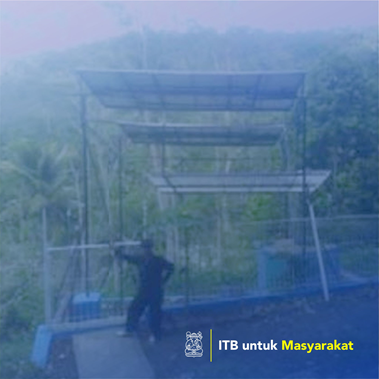

Zaki Su`ud
Agricultural land in the Cibalong Tasikmalaya area several years back cannot be optimized for production of crops because of the constrained irrigation system. There are several factors that cause less optimal agricultural land irrigation systems, including: � agricultural land whose position is higher than water sources (rivers) � increasingly little water sources and discharge of water sources that are too low to irrigate agricultural land For the area? Agricultural regions like this, alternative energy development is very important to increase the availability of water so that agriculture can run well. If this effort succeeds the positive impact is urbanization to the city? Big cities can be reduced while increasing food durability. Alternative energy is needed to ensure the availability of water is cheap and easily. There are several mechanisms lifting water to a higher place: � First use the hydram pump (appropriate technology) to directly push water to a higher place using the swift flow of river water. It's just that this method has an obstacle to the aspects of the altitude flexibility, distance, etc., � The second alternative if the river flow is quite heavy or the river field is tilted so there is quite different height in the river or there is a waterfall, it can be used by the hydro nano generator system to produce electricity which is then used to pump water up to the irrigation water shelter center to be distributed to land ? Agricultural / plantation land around it. � Third alternative if the river flow is calm, solar energy must be used or wind to produce electricity which is then used to pump the water up to the irrigation shelter center to then be distributed to land? Agricultural land. In this study for the Cibalong area that has been conducted a survey, the third condition is suitable and specifically the use of solar energy as Sumebr's energy to pump water to land? The agricultural land is located on the river. The scope of this PM implementation includes: � Development of solar-based irrigation systems in the Cibalong Tasikmalaya region � socialization of solar-based irrigation system programs to people who have agricultural land � Surgical and treatment of solar energy-based irrigation systems and systems
Implementation of social care activities in the form of education / counseling / mentoring
Agriculture in this Cibalong area has produced yields until 3 times in 1 year. However, this condition decreases continuously along with the number of tree logging so that groundwater reserves are reduced. This resulted in a decrease in crop yields with frequency of harvest which was only 1 time in 1 year.